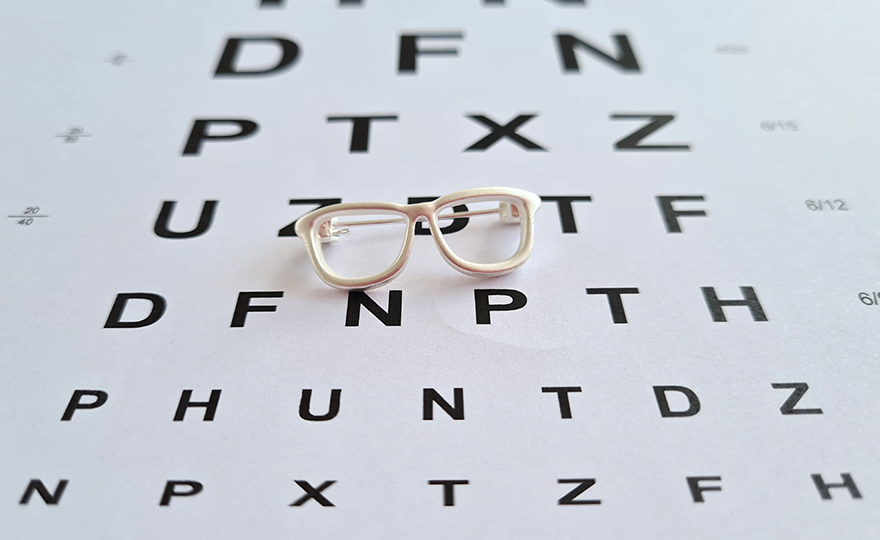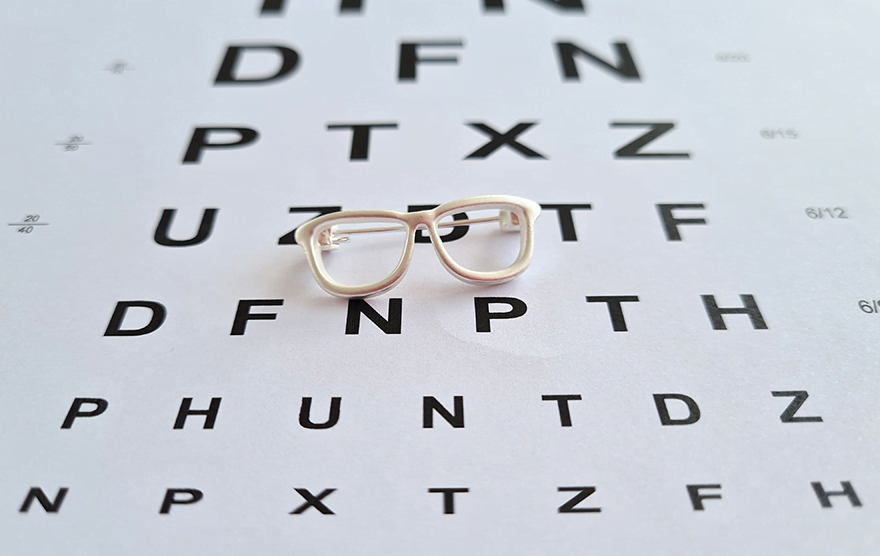
Astigmatism – Busted! Everything you need to know

Ever noticed things looking a bit blurry or distorted? It could be astigmatism, a common eye condition making the world a little less clear. Let’s uncover all about astigmatism in simple terms.
What is Astigmatism?
Astigmatism, a prevalent refractive error impacting vision clarity, can occur from birth or stem from eye injuries leading to corneal scarring. Unlike the ideal round shape of a healthy eye, irregularities in corneal curvature cause light to focus either in front of or behind the retina. This discrepancy results in blurred or distorted vision for objects at varying distances.
How is Astigmatism Caused?
There are different causes that can lead to astigmatism. Following are the common causes of astigmatism:
Corneal irregularities:
Ideally, the cornea, the transparent front part of the eye, should have a rounded shape. Astigmatism occurs when the cornea takes on a more oval or football-like shape. This irregularity causes light entering the eye to disperse onto multiple points rather than a single point on the retina, resulting in blurred vision.
Lenticular astigmatism:
Astigmatism can sometimes be attributed to irregularities in the eye’s lens rather than the cornea. Referred to as lenticular astigmatism, this condition may arise from factors like injury, surgery, or specific genetic conditions.
Genetic factors:
There’s a hereditary aspect to astigmatism. If your parents or other family members have astigmatism, your likelihood of developing it increases.
Eye surgery or injury:
Certain eye surgeries or injuries can modify the shape of the cornea or lens, leading to astigmatism. It’s crucial to adhere to post-operative care guidelines to minimize the risk of complications.
Keratoconus:
A progressive eye condition, keratoconus involves the thinning and gradual bulging outward of the cornea, potentially causing astigmatism. Although keratoconus itself is not widespread, it presents a potential cause of astigmatism.
Blurred or distorted vision:
The primary indicator of astigmatism is experiencing blurry or distorted vision, whether looking at objects up close or at a distance.
Eyestrain:
Astigmatism often leads to eye strain as the eyes exert extra effort to focus on objects due to irregular cornea or lens curvature.
Headaches:
Extended periods of concentrating on objects with astigmatism may result in headaches, especially if the condition remains uncorrected.
Squinting:
Individuals with astigmatism might subconsciously squint as they try to enhance focus and clarity in their vision.
Signs and Symptoms of Astigmatism
You need to be careful to be able to identify the early warning signs of astigmatism without any negligence. Look out for the following symptoms if you are in doubt:
- Blurred or distorted vision: The most common symptom of astigmatism is blurry or distorted vision, both at a distance and up close.
- Eyestrain: Astigmatism can cause eye strain as the eyes work harder to focus on objects due to the irregular curvature of the cornea or lens.
- Headaches: Prolonged periods of focusing on objects with astigmatism can lead to headaches, particularly if left uncorrected.
- Squinting: Individuals with astigmatism may unconsciously squint in an attempt to improve focus and clarity.
How is Astigmatism detected?
Detecting astigmatism involves a simple yet crucial diagnostic process during eye exams. Eye specialists use tools like phoropters, which help determine the precise prescription for correcting vision. Additionally, keratometers measure corneal curvature, while corneal topography creates a detailed corneal map. Autorefractors provide objective refractive error measurements. Regular eye exams are key to spotting astigmatism early, ensuring timely correction and maintaining clear vision. Stay informed about this straightforward diagnostic process to prioritize your eye health and keep your vision sharp.
What are the different types of Astigmatism?
| Type of astigmatism | Description |
| Regular astigmatism | In this, cornea has a regular and symmetrical shape, resembling a football. The principal meridians (the steepest and flattest curves of the cornea) are perpendicular to each other. |
| Irregular astigmatism | Irregular astigmatism occurs when the cornea has an irregular shape, often due to scarring, keratoconus, or certain eye injuries. This irregularity can’t be corrected with regular glasses or contact lenses and may require specialized lenses or surgical intervention. |
| Hyperopic astigmatism | Hyperopic astigmatism is characterized by both farsightedness (hyperopia) and astigmatism. In this case, one meridian is hyperopic (light focuses behind the retina), and the other meridian has astigmatism. Corrective lenses are often prescribed to address both conditions simultaneously. |
| Mixed astigmatism | Mixed astigmatism combines features of both nearsightedness (myopia) and farsightedness (hyperopia) within different meridians of the eye. This results in one meridian focusing light in front of the retina (myopic) and the other behind the retina (hyperopic). Corrective lenses or surgical options are used to address this combination of refractive errors. |
| Lenticular astigmatism | Irregularities in the eye’s lens, often due to aging; corrected with lenses managing refractive errors associated with this. |
| Posterior corneal astigmatism | Originates from the back surface of the cornea; less common but assessed using modern tools like corneal topography for accurate correction. |
Astigmatism treatment options
Below are some of the important treatment options for Astigmatism:
Glasses and contacts:
Traditional yet effective, glasses and contact lenses offer a quick fix for astigmatism, providing clear vision by compensating for irregular corneal shapes.
Refractive surgery (LASIK/PRK):
Opting for surgical correction, LASIK or PRK procedures reshape the cornea, reducing or eliminating astigmatism for lasting visual improvement.
Toric contact lenses:
Specially crafted for astigmatism, toric lenses provide stable vision by accommodating the unique corneal irregularities.
Orthokeratology (Ortho-K):
Non-surgical and overnight, Ortho-K lenses reshape the cornea temporarily, allowing for clear vision during the day without the need for lenses or glasses.
Phakic intraocular lenses (IOLs):
Implantable lenses are a potential solution for individuals with high astigmatism or those ineligible for LASIK, offering vision correction without removing the eye’s natural lens.
ICRS (Intracorneal Ring Segments):
Implanted into the cornea in conditions such as Keratoconus, these tiny segments regularize the corneal shape and minimize the existing astigmatism.
Ensure you consult with an eye specialist to opt for the most suitable treatment option for your specific astigmatism needs and overall eye health.
What are the refractive errors besides astigmatism?
Refractive errors, including astigmatism, nearsightedness (myopia), and farsightedness (hyperopia), are common vision problems caused by the eye’s shape affecting light focus on the retina. Nearsighted individuals see close objects clearly but struggle with distance, while farsighted individuals face challenges with close-up tasks. These issues stem from variations in eyeball length. Understanding these differences is vital for effective corrective measures.
Astigmatism may impact vision clarity. Early detection and diverse treatment options, including glasses, contacts, and advanced procedures like LASIK or PRK, can help in regaining clear vision. Regular eye exams aid spotting astigmatism, empowering you to make informed decisions about your eye health. Understanding refractive errors like myopia and hyperopia is key. For lasting vision solutions, explore PLANET LASIK powered by Centre For Sight. Our experts offer personalized guidance for optimal visual enhancement. Choose clarity—schedule your consultation with PLANET LASIK for a brighter future today.
FAQs Astigmatism
What are the tips to manage astigmatism?
Elevate your astigmatism management with personalized solutions: regular eye check-ups, specialized toric lenses, and targeted eye exercises. Illuminate your space for optimal vision and maintain overall eye health. Also, don’t neglect visiting eye specialists in case you experience some discomfort.
What sets PLANET LASIK apart in astigmatism treatment?
At PLANET LASIK, excellence meets vision care. We’re powered by the distinguished Centre For Sight, supported by a team of renowned eye specialists and surgeons with decades of expertise. Our commitment to state-of-the-art technology ensures your journey is seamless, comfortable, and customized to perfection. Experience unparalleled eye care at PLANET LASIK.
Are there surgical options for astigmatism?
Yes, surgical options such as LASIK and PRK offer reliable solutions for astigmatism treatment. These refractive procedures reshape the cornea, enhancing visual clarity. Explore personalized surgical choices with a consultation for effective astigmatism management.
What is the recovery process after astigmatism Treatment?
At PLANET LASIK, recovery after astigmatism treatment is usually fast and smooth. Most patients experience improved vision within a few days, with minimal discomfort. Our dedicated medical team takes care of a smooth post-op journey, prioritizing your comfort and visual well-being. Discover a seamless recovery at PLANET LASIK.
Can astigmatism come back after treatment?
While astigmatism treatments are generally effective and long lasting, it’s rare for it to recur completely. However, slight changes can happen. Regular eye check-ups help in monitoring and addressing any shifts in vision. Consult with your eye specialist for personalized, long-term astigmatism management.
Is astigmatism surgery painful?
Astigmatism surgery is generally not painful. Advanced techniques and anesthesia ensure a comfortable experience during the procedure. Patients often report minimal discomfort, and with a stable recovery, improved vision follows. Consult with your eye care professional for personalized details.
How soon can I resume normal activities after undergoing refractive surgery for astigmatism?
Generally, you can resume normal activities within 3-5 days after refractive surgery for astigmatism. The exact time of recovery varies for each patient depending upon several factors. However, PLANET LASIK prioritizes a seamless, comfortable post-op period for enhanced vision.
